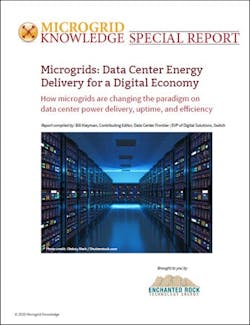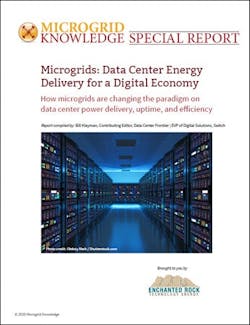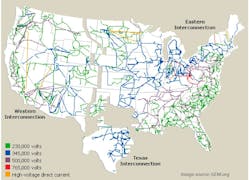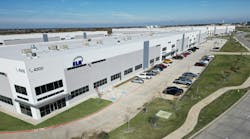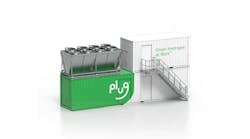This special report series on the growing role of data center microgrids in the colocation and big data industry, kicks off with an entry that explores the juxtaposition of the data center and the environment.
Get the full report.
Today, the data center industry consumes about as much power as the entire global airline industry. And, based on research from the field, these levels of energy consumption will only continue to increase. Research studies estimate that ongoing power costs are growing at least 10% per year due to cost per kilowatt-hour (kWh) increases and underlying demand. This power increase is especially true for high-power density servers. Approximately 10% of data center operating expenditure (OPEX) is power, and that number is likely to increase to 15% of data center OPEX within five years.
As more organizations place their new IT systems into the data center (colocation, hyperscale and private/enterprise), energy efficiency and procuring data center power are extremely important. And, they are essential for multiple reasons. First, data center administrators are working hard to cut costs, but it is not always easy. Those same administrators are also working overtime to minimize fragmented management overhead and improve infrastructure efficiency.
Consider this:
A recent report by the Natural Resources Defense Council indicates that data center electricity consumption is projected to increase to roughly 140 billion kWh annually in 2020, the equivalent annual output of 50 power plants, costing American businesses $13 billion annually in electricity.
Join us for “Microgrid Myths: Busted,” a free webinar on data center microgrids, 2 pm ET, Tuesday, June 23. Register Today!
But it is not just at the core data center locations where energy consumption is increasing. Organizations are also investing in distributed computing and edge environments to support more users and more use cases. These hyperscale data centers are commonly sited where power is the least expensive, which is frequently in remote areas. Often, in rural areas, working with reliable power solutions can be a challenge. Moreover, environmental conditions in these locations, such as storms, fallen trees, high winds, or intense heat, do not help, either. Organizations need ways to support critical, ongoing operations at the edge and beyond.
Before we go on, let’s examine today’s power grids and delivery systems.
Power grid solutions and general power availability
When you are building edge, critical infrastructure, or data center solutions, it’s essential to understand the regional power grid infrastructure. Just because a geographic area has access to ample power does not mean that the energy can always be delivered to the data center. Further, it does not always mean you will have multiple sources of reliable power for a particular site.
Look for the location with power stations, substations, and electrical feeds to the facility as well as redundancy throughout the delivery system. Also, research recent area outages to understand the time-to-repair for the utility provider. When working with critical infrastructure, it’s essential to understand the age of the equipment as well as the security and redundancy metrics of the local power grid. Take time to understand the regional power utilities, their capabilities and how that ties into the data center provider and power source you are selecting.
In its analysis of 28 years of U.S. power outage data, Climate Central shows a tenfold increase in major power outages between the mid-1980s and 2012.
Your redundancy and power availability
Looking at the chart to the right, notice areas with significant power sources versus those areas that are poorly covered. As the digital economy picks up steam, there will be more initiatives to get more people to connect into the cloud. And these new clients of the cloud will require reliable power sources. So, if you are in a rural region and you only have one power source, how are you managing redundancy and efficiency? How can you ensure the effective delivery of stable power to the edge and beyond
Or, maybe you’re in an urban area, and you’re having some issues finding reliable, redundant energy sources for your core or edge deployments. And, if these are critical systems, such as healthcare, what can you do to ensure minimal downtime?
Weather and climate disasters will impact power delivery
Weather patterns play a significant role in power availability and pricing. For example, wildfires like those in California, earthquakes, flooding, high winds, and extreme temperature all have the potential to cause frequent or extended power outages. NOAA recently pointed out that the U.S. has sustained 258 weather and climate disasters since 1980, where overall damages/costs reached or exceeded $1 billion (including CPI adjustment to 2019). While not always large scale, localized severe weather occurs virtually every week somewhere in the U.S. These events often damage the fragile electric grid and knock out power for hours, or even days.
Unfortunately, extreme weather events are becoming more frequent, more intense, and more expensive. According to NOAA, in 2019, there were 14 weather and climate disaster events with losses exceeding $1 billion each across the U.S. The 1980-2019 annual average is 6.5 $1 billion events (CPI-adjusted), and the yearly average of the most recent five years (2015-2019) is 13.8 events (CPI-adjusted).
Severe weather is one of the biggest causes of power outages in the U.S., and Climate Central reports that weather-related power outages are on the rise. In its analysis of 28 years of U.S. power outage data, Climate Central shows a tenfold increase in major power outages between the mid-1980s and 2012.
To combat these outages, organizations, governments, and regional power suppliers should look for reliable, alternative solutions, such as microgrids, to ensure their critical infrastructure stays up and running. The U.S. Department of Energy (DOE) Office of Electricity already has a comprehensive portfolio of activities that focus on the development and implementation of microgrids to further improve the reliability and resiliency of the grid. These microgrids help communities better prepare for future weather events and keep the nation moving toward cleaner energy strategies.
According to the Office of Electricity, the microgrid program goals are to develop scalable microgrid systems capable of reducing the outage time of required loads by more than 98% at a cost comparable to non integrated baseline solutions, while reducing emissions by more than 20% and improving system energy efficiencies by more than 20% by 2020.
The private sector is already adopting microgrid solutions to help offset power requirements, create more resilient systems, and improve the delivery of essential services. However, not every microgrid is built the same. And, if you believe that microgrids are simply here to replace a backup generator, you might be missing out on some key benefits of an advanced microgrid power delivery system.
And also stay tuned. In the coming weeks this Microgrid Special Report series will explore the following topics:
- Why a Microgrid is so Much Better than Just Backup Generation
- How Microgrids Introduce New Data Center Economics
- What’s New? The Microgrid is a Lot More Efficient — Effortless to Run
- Microgrid Partners Aim to Change Power Delivery, Efficiency and Economics
Get the full report, “How Microgrids are Changing the Paradigm on Data Center Power Delivery, Uptime, and Efficiency,” courtesy of Enchanted Rock, to further explore the growing symbiotic relationship between microgrids and data centers. Or, Join us for “Microgrid Myths: Busted,” a free webinar on data center microgrids.
